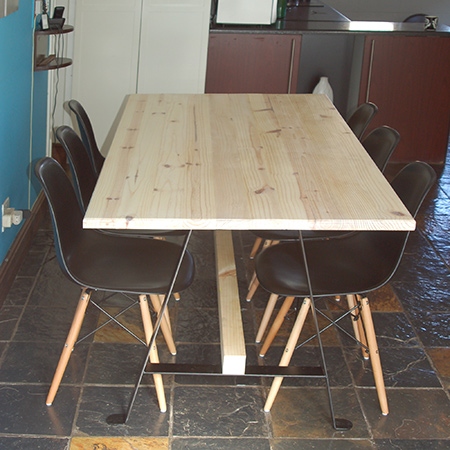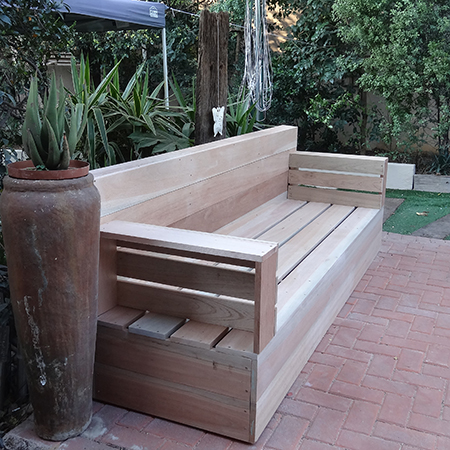Choose the right timber for your DIY project
We offer a guide to selecting the right timber for your indoor or outdoor projects, and that will ensure your projects last as they should.
02/06/2019
west elm
Over the years I have used several different types of timber for my DIY projects, and the timber I select is generally based on what it will be used for. In South Africa we don't have much choice when it comes down to variety, unless you are prepared to spend a fortune, but there are options.
Interior or exterior wood projects
When you need to buy timber for an outdoor project you will generally select this on the type of furniture you want to make, and how it will look once finished. You will probably also be determined by what timber is readily available and the ultimate cost of the timber, since the pricing for timber has gone up considerably due to over-use and lack of supply.
Pine and Meranti are the most commonly used timbers for DIY furniture projects locally, and Meranti is used quite a bit for exterior projects, since it is affordable and can withstand our climate. Another affordable timber to consider for your projects is Salina, and we look at the pros and cons of using these timbers for home DIY furniture projects.
• SA PINE
I think by now that we all know that pine is a reasonably inexpensive timber for all types of DIY projects. Plus, pine is a timber that can be found everywhere at Builders stores or timber merchants. What I like most about using our local pine is that you can buy PAR (planed-all-round) pine that is ready for use in different thicknesses and widths, which is great if you don't have your own tools or facilities for doing your own planing or cutting large pieces down to size.
What many people don't know is that you can buy pine (SAP) as an untreated timber that works out far more affordable that PAR pine. The difference between untreated pine and PAR pine is that it requires a bit more sanding to smooth the finish, but when you consider the cost saving between these two, it's worth the extra effort. Since untreated pine has not been planed-all-round, the sizing is a bit different. For example:
PAR SAP Untreated (32 x 69mm x 3.0m) - A 3 metre length of 32 x 69mm PAR pine costs R155/3 metre
SA Pine Untreated (50mm x 76mm x 5.4m) - A 5.4 metre length of 50 x 76 untreated pine costs R125/5.4 metre
Not only can you buy a much longer length at a better price, you also get a thicker and wider plank for less. However, when buying your untreated pine, be sure to check for warping, bowing, twisting or cupping along the length, as these can be problems when buying a longer length. Alternatively, check for stock on a shorter length.
Can you use pine for outdoor projects? Yes, you can, as long as an exterior sealer is applied regularly. I admit that it is a hassle to have to apply sealer every so often, but when you consider that other timbers are almost three times the cost, I do think it is worth it in the long run if you are looking to save money.
• MERANTI
Meranti is a great timber for use for DIY projects. Unlike pine, this wood fairs a bit better than pine, even though it is not generally recommended for outdoor use. However, with the application of an exterior sealer, meranti is a far more durable timber to work with for a variety of outdoor project. Below you will find details of the outdoor sofa I made in 2014, and this was my first time using meranti for outdoors. Overall, I am extremely happy with how well the timber has fared over the years.
• SALIGNA
Saligna, or Eucalyptus Saligna, is another ideal timber for use both indoors and outdoors. Not only that, it is a common timber that is indigenous to our region. While not as inexpensive as pine and slightly more expensive than meranti, this timber is perfect for use outdoors and is commonly used for wooden frames and doors. You will find a few saligna products at your local Builders store, but quite a few timber merchants offer a selection of saligna products used for construction and it well-liked for use for flooring and furniture.
Saligna is a heavy hardwood that is not too difficult to work with, even with entry-level (Bosch green) power tools. And if you are looking to make furniture that will last a lifetime, saligna is appreciated for a natural dark honey colour and affordability when compared to exotic or imported hardwoods.
If you are looking to build your own wood furniture, whether for indoors or outdoors, I hope that the above provides more information on selecting the right timber for the project.




